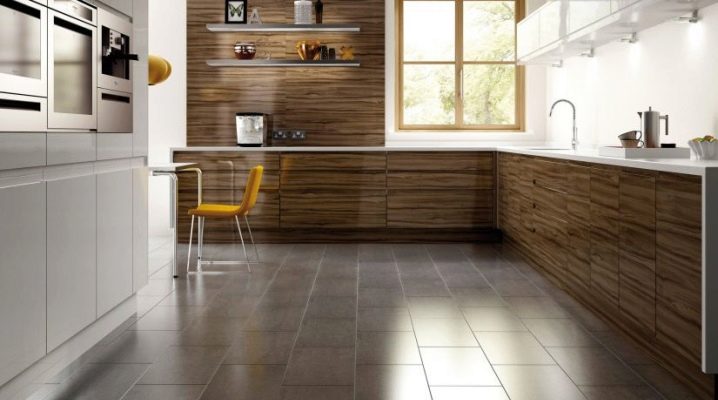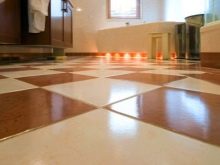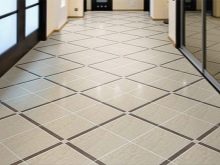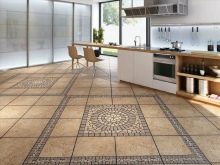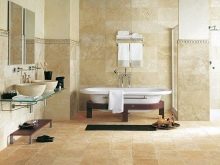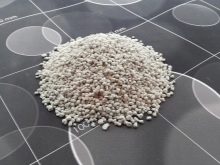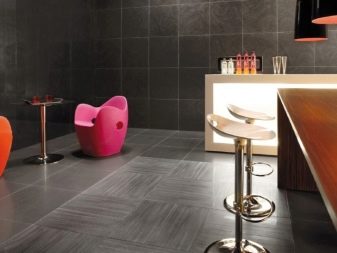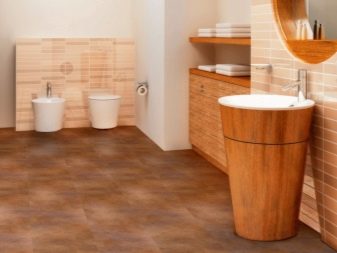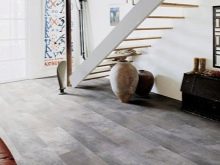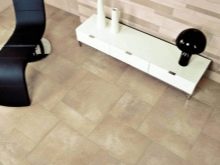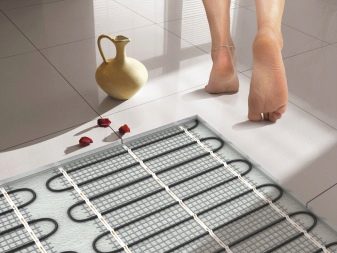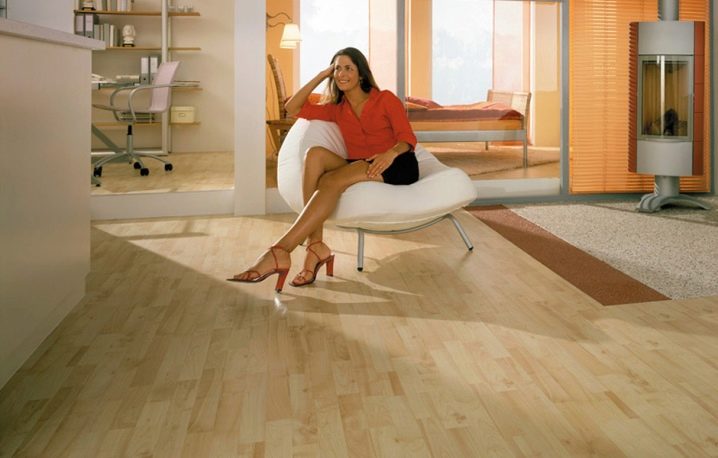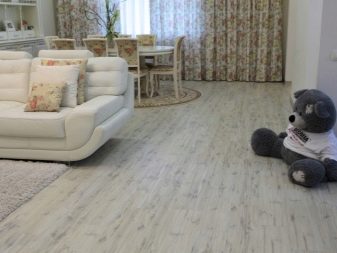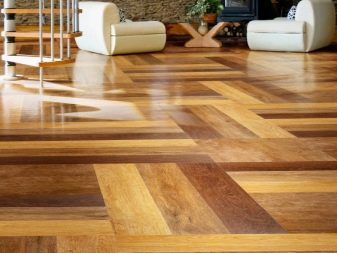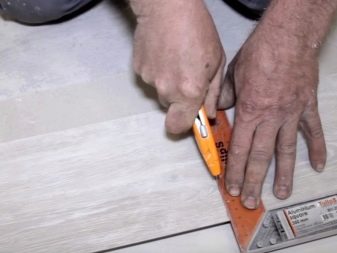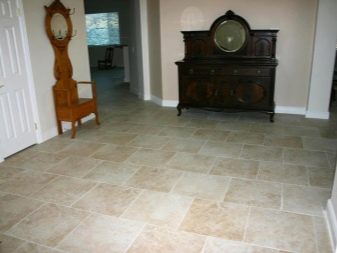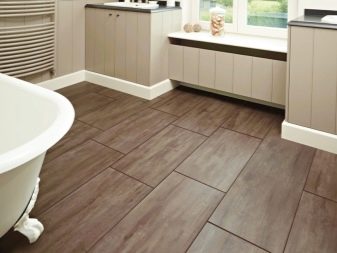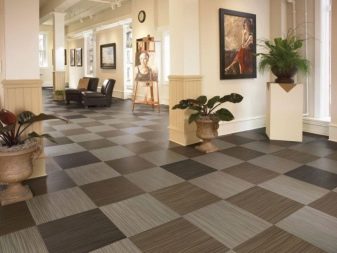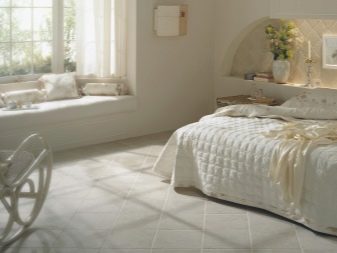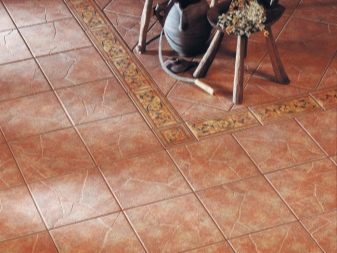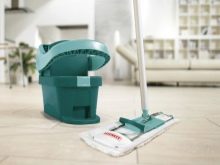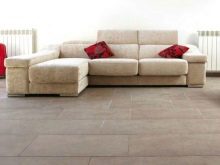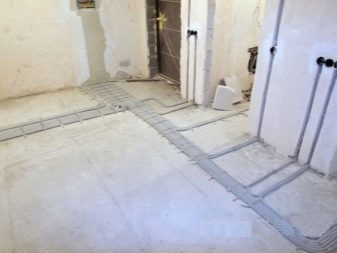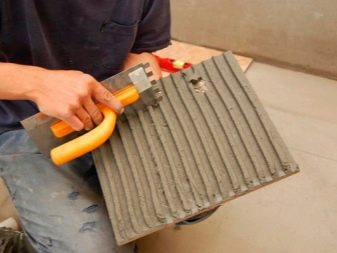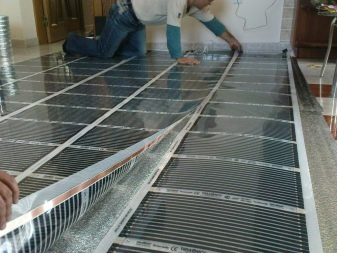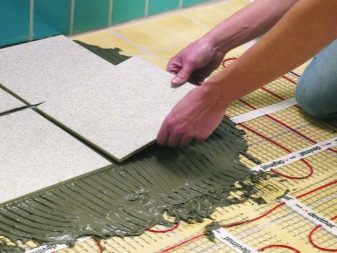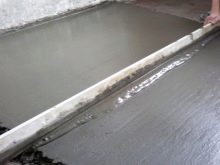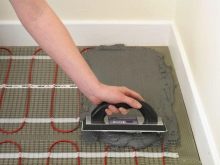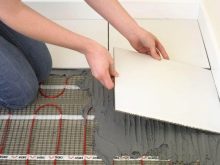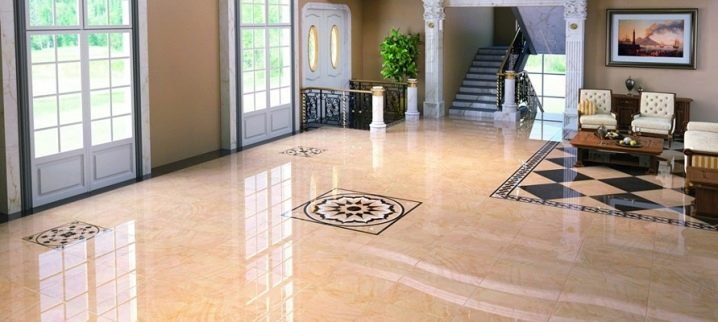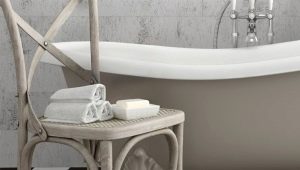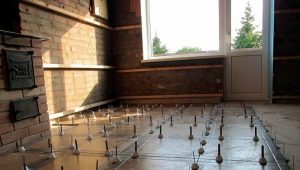Warm floor tiles: the pros and cons
Warm floor tiles appeared recently, thanks to the development of Japanese experts. The new product is highly resistant to various kinds of pollution and very pleasant to the touch.
Special features
Floor tiles retain heat as a result of filling the ceramic material with air bubbles. Due to this, a heat-insulating layer is formed, allowing the tile to stay warm without heating.
Accordingly, installing such tiles in the bathroom, bathrooms, corridor or kitchen area, you will be spared the need for additional installation of floor heating systems or buying carpets.
Warm tile is made of ceramic foam, before a similar solution was used for insulation of furnaces. The strength of the material is achieved by roasting, which decomposes organic compounds.The performance characteristics of the material depend on the structure, the number of bubbles, their size and the characteristics of their location.
Warm ceramic tiles are presented on the building materials market in a wide range: with various technical and operational characteristics. So, for outdoor use foam ceramics with low porosity, manufactured using a special technology that allows to increase the resistance of tiles to high mechanical loads.
If the room has a large cross, you need to choose a floor covering with high resistance to wear.
The merits of warm tiles
In favor of choosing a warm tile says a number of positive characteristics that it has:
- special spray with antibacterial properties;
- resistance to mechanical stress;
- porous structure, giving the tile a low degree of thermal conductivity (a rough surface with a noticeable relief conveys less heat to the leg than a smooth one);
- resistance to pollution and adverse environmental effects: moisture, UV rays, aggressive environment;
- environmental friendliness, the absence of components harmful to humans;
- huge range: various forms, textures, shades.
Among the disadvantages of warm ceramic tiles, its high cost can be noted: from $ 100 per 1 m2.
Ceramic foam can be combined with a system of water or electric floor heating. Due to the low thermal conductivity, a warm tile will consume the minimum amount of energy, while carrying out a sufficient heating of the floor surface.
Species
Most often, warm ceramic and porcelain stoneware tiles, as well as ceramic parquet are used for residential premises. However, there are other varieties.
PVC Tile Began to use quite recently. Most often it is used in the kitchen and in the bathrooms, storage, public and industrial premises, garages. The price of this material is significantly lower in comparison with porcelain stoneware counterparts, but the service life is also less.
The PVC tile differs in durability, but after time expires loses attractive appearance.
Among the advantages of such tiles can be noted:
- ease of transportation;
- high strength;
- good sound insulation;
- a wide range of textures and color options;
- high moisture resistance.
- the possibility of re-mounting when peeling;
- the presence of anti-slip coating;
- easy to cut.
The disadvantages of PVC tiles can be attributed to its artificial basis. The apartment is recommended to use natural finishing materials. Recently, designers are increasingly using PVC tiles that mimic natural stone.
For the decoration of residential space, commercial and industrial enterprises can be used another kind of material - warm vinyl tile. You can purchase a high-quality and certified product in large building stores and from official representative companies.
Material can be combined with systems of additional floor heating.
The recommended parameters of temperature fluctuations of vinyl tiles can be: up to + 32 degrees in the bathroom and pool, up to + 29 in other rooms.
Tips for choosing
Warm tile fits perfectly with any design elements, so there are no restrictions in its choice: you can use any shade, pattern and size. However, it will not be superfluous to take into account when choosing flooring the size of the room where the installation will be performed,lighting features and overall style.
When choosing a material it is necessary to pay attention to the following specifications:
- strength;
- heat capacity;
- electrical insulating properties;
- fire safety;
- wear resistance;
- anti-static;
- rigidity;
- hygiene;
- friction index;
- porosity (the lower it is, the stronger and frost-resistant material);
- resistance to chemicals.
When to choose
Warm tile must be chosen in the process of creating a design project to make the necessary calculations. If at the design stage tile selection is not possible, then it is necessary to calculate the floor covering, based on the worst parameters.
Most likely, this will affect the waste of material in the future, but it will be possible to save on floor heating.
The nuances of editing
Warm ceramic tiles have some nuances in the installation process. This applies to the peculiarities of laying the material and its seamless docking. Since the material tends to expand during the heating process, this can lead to the appearance of cracks. To avoid adverse effects, it is necessary to choose the right adhesive mixture. In rooms with a high level of humidity it is recommended to use a two-component adhesive base.
Detailed information on the features of temperature fluctuations is indicated on the adhesive package. Most often, tile installers use epoxy.
You can prepare the floor for installation of the cover yourself, following the instructions, but it is better to leave this work to professionals to avoid mistakes. Communications and wiring must be well secured and cleaned.. During the installation process, it is necessary to control that there are no air spaces under the coating, otherwise in the future their presence will lead to a breakdown of the heating system.
Features of work on laying
The use of warm tiles allows you to feel comfortable at any time of the year. In winter, it is comfortable to walk on it, even barefoot, and in summer it gives the feet a pleasant coolness.
Under the floor, you can install either a water floor or an electric heating system.. For the latter option, a cable or film with IR radiation can be used. The cable is placed on a special adhesive base or on the screed. This is a quick installation option that heats the floor in a short amount of time.The heating system using a cable consumes a large amount of electricity, and in the event of a breakdown is not repaired.
The infrared film is assembled from heated modules, which is a more budgetary option in terms of the amount of electricity consumed. The infrared film is not susceptible to corrosion, works silently, is easy to repair (the broken part is replaced, and not the entire system). However, the installation of a heating system using infrared film is much more expensive than using a cable, components are also much higher.
When choosing materials it is impossible to save: expensive and high-quality products will last much longer.
Installation of tiles is carried out as follows:
- cleaning the floor from dirt and dust, leveling;
- laying of insulating material;
- installation of a water or electric floor system, check;
- applying adhesive mixture to the floor with a notched trowel;
- after 15 minutes you can begin laying the coating;
- leave the tile to dry for 24 hours;
- grout the joints;
- finish the installation.
It is recommended to enter the surface into active operation after 30 days.
It is easy to choose a tile for the floor.However, if you doubt something, it is better to entrust the matter to professionals, then the flooring will last for a long time.
How to carry out laying of a heat-insulated floor under a tile, look in the following video.
